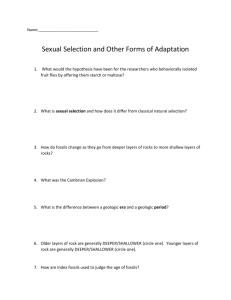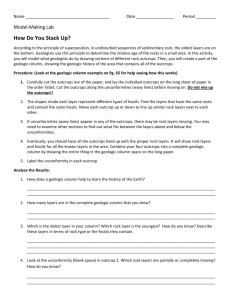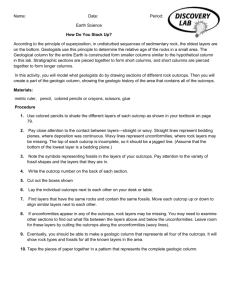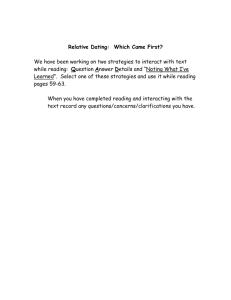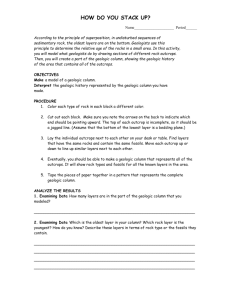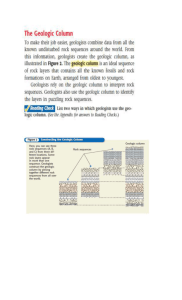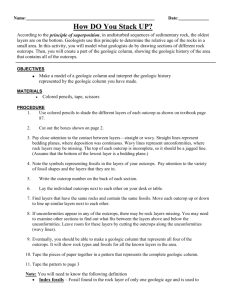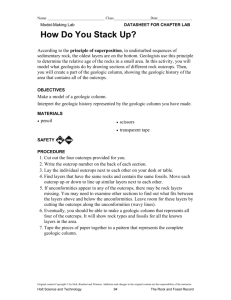geologic column and application questions
advertisement
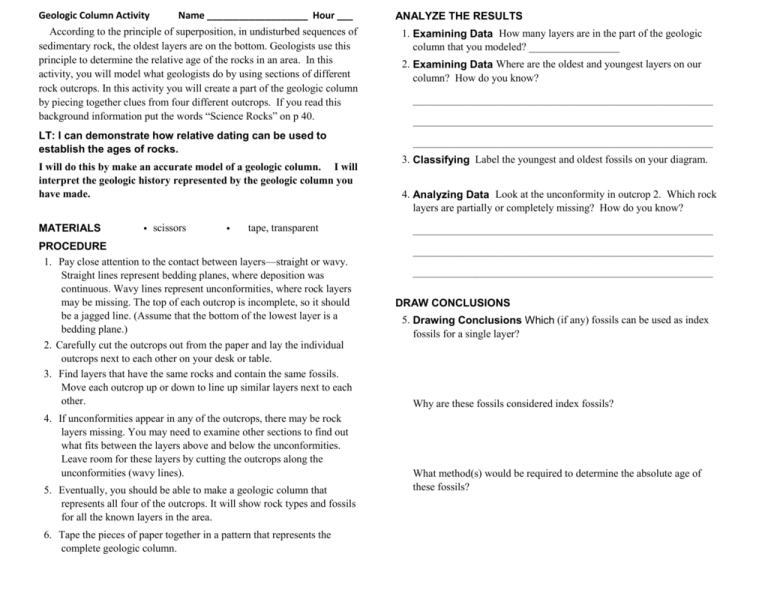
Geologic Column Activity Name ___________________ Hour ___ According to the principle of superposition, in undisturbed sequences of sedimentary rock, the oldest layers are on the bottom. Geologists use this principle to determine the relative age of the rocks in an area. In this activity, you will model what geologists do by using sections of different rock outcrops. In this activity you will create a part of the geologic column by piecing together clues from four different outcrops. If you read this background information put the words “Science Rocks” on p 40. LT: I can demonstrate how relative dating can be used to establish the ages of rocks. I will do this by make an accurate model of a geologic column. I will interpret the geologic history represented by the geologic column you have made. MATERIALS • scissors • tape, transparent PROCEDURE 1. Pay close attention to the contact between layers—straight or wavy. Straight lines represent bedding planes, where deposition was continuous. Wavy lines represent unconformities, where rock layers may be missing. The top of each outcrop is incomplete, so it should be a jagged line. (Assume that the bottom of the lowest layer is a bedding plane.) 2. Carefully cut the outcrops out from the paper and lay the individual outcrops next to each other on your desk or table. 3. Find layers that have the same rocks and contain the same fossils. Move each outcrop up or down to line up similar layers next to each other. 4. If unconformities appear in any of the outcrops, there may be rock layers missing. You may need to examine other sections to find out what fits between the layers above and below the unconformities. Leave room for these layers by cutting the outcrops along the unconformities (wavy lines). 5. Eventually, you should be able to make a geologic column that represents all four of the outcrops. It will show rock types and fossils for all the known layers in the area. 6. Tape the pieces of paper together in a pattern that represents the complete geologic column. ANALYZE THE RESULTS 1. Examining Data How many layers are in the part of the geologic column that you modeled? _________________ 2. Examining Data Where are the oldest and youngest layers on our column? How do you know? ______________________________________________________________ ______________________________________________________________ ______________________________________________________________ 3. Classifying Label the youngest and oldest fossils on your diagram. 4. Analyzing Data Look at the unconformity in outcrop 2. Which rock layers are partially or completely missing? How do you know? ______________________________________________________________ ______________________________________________________________ ______________________________________________________________ DRAW CONCLUSIONS 5. Drawing Conclusions Which (if any) fossils can be used as index fossils for a single layer? Why are these fossils considered index fossils? What method(s) would be required to determine the absolute age of these fossils?


